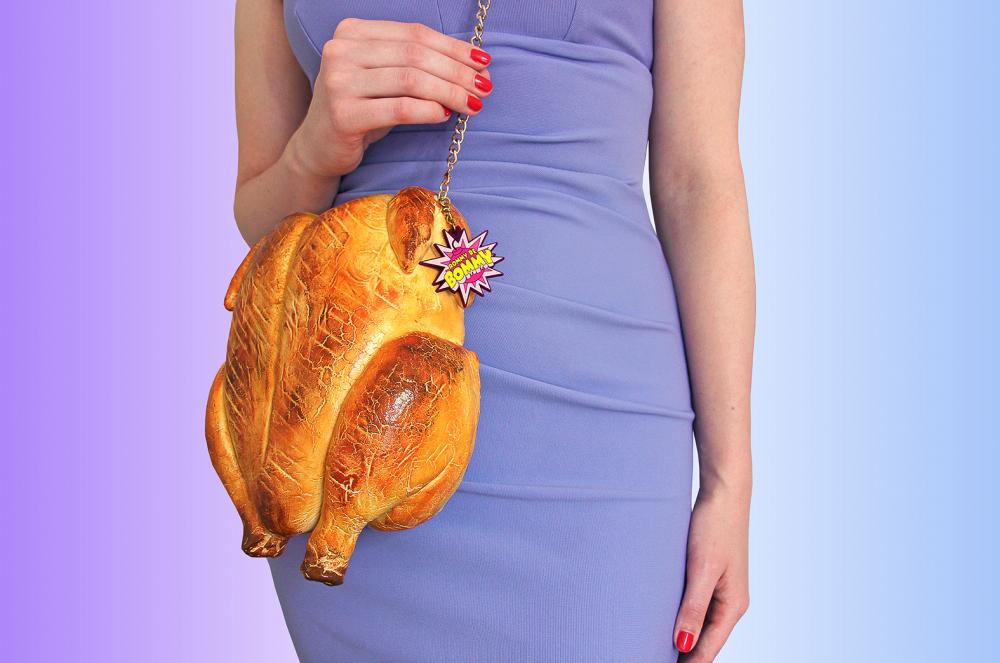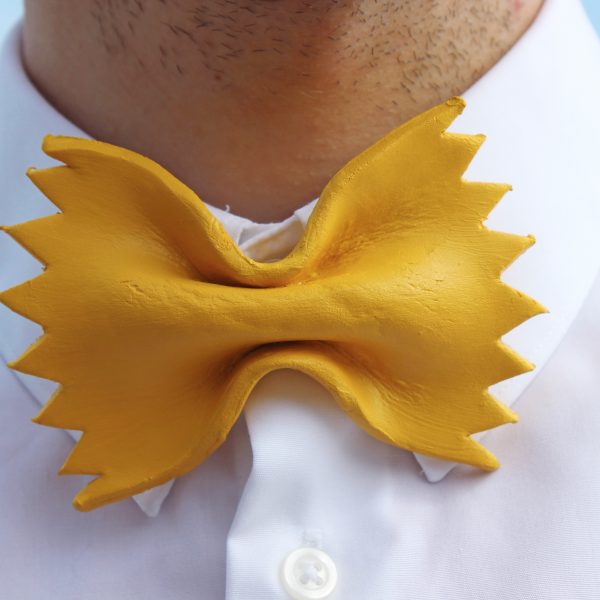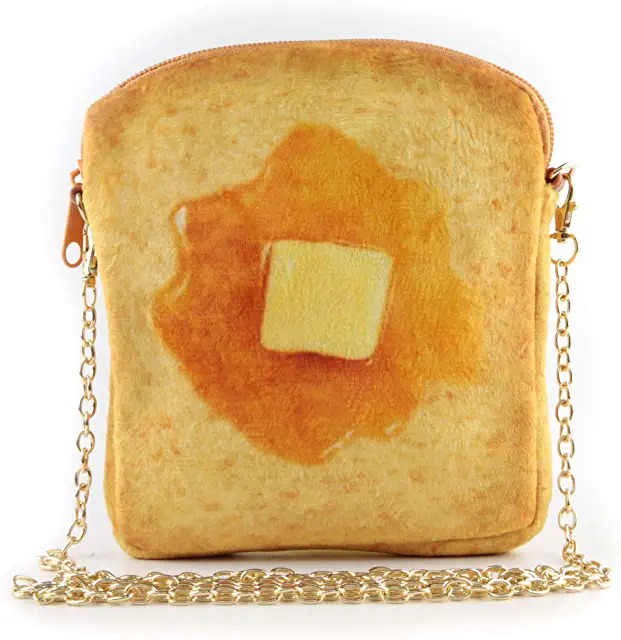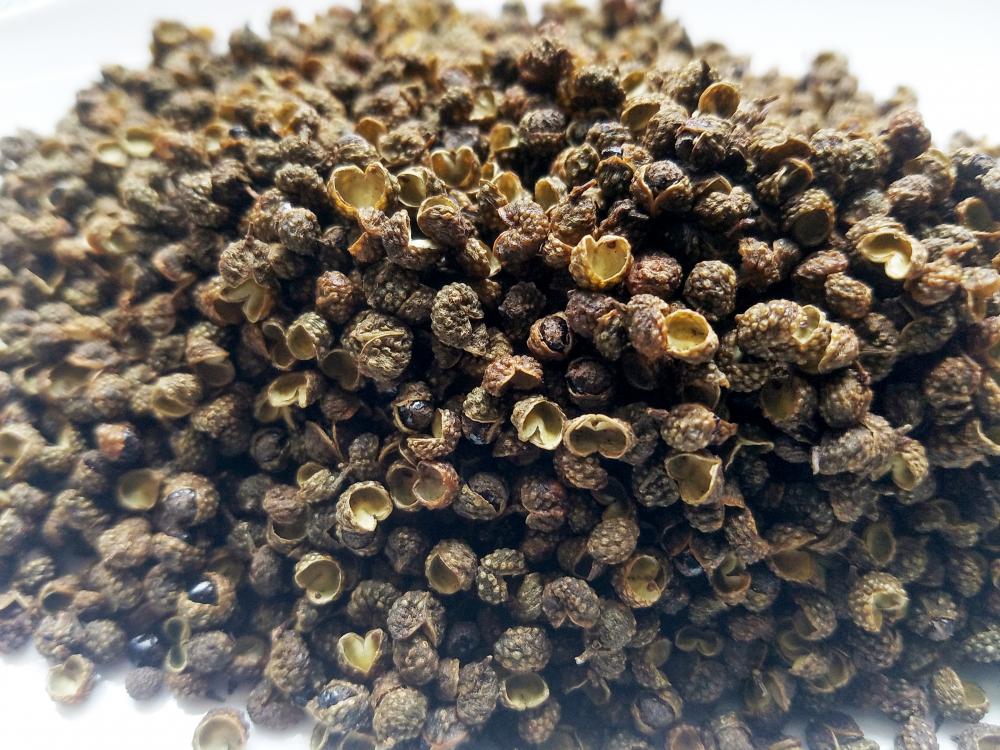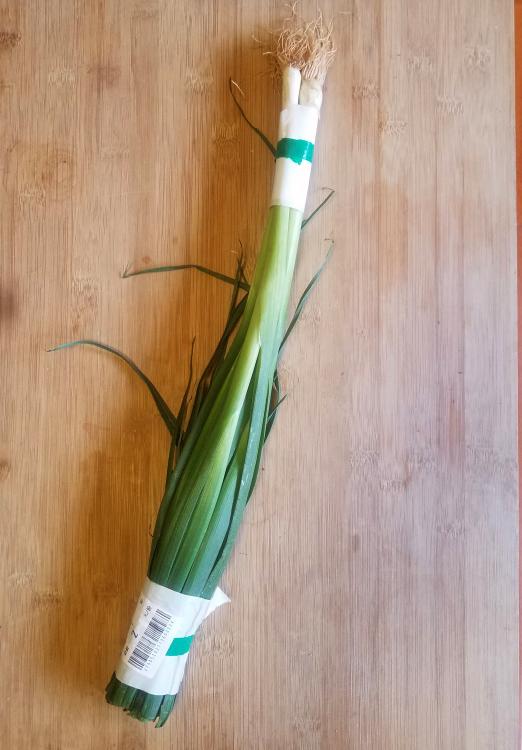-
Posts
16,656 -
Joined
-
Last visited
Content Type
Profiles
Forums
Store
Help Articles
Everything posted by liuzhou
-
No. The texture was as normal. Just the taste knocked me out. The way they absorbed the vinegary taste with hints of chicken fat.
-
Clearly ( I hope), this not all of my dinner, but I bring it to tell you something important! I have stumbled on my new favourite way to cook potatoes. I was braising some skinless chicken drumsticks in Shaoxing wine and Zhenjiang (Chinkiang) black vinegar with some onion. Decided to have the chicken with simply boiled, skin-on, new potatoes. At that moment terminal laziness struck and I just threw the potatoes in with the chicken and braising liquid instead of getting out a new pan. A revelation! Potatoes done in Zhenjiang vinegar, Shaoxing wine and some chicken exudance juices are the future of potatoes! Some of dinner. Served with a side of stir-fried greenery, which I can't even remember eating. I was more in awe at the awsomeness of the awesome potatoes. Did I mention, they were quite good?
-
It is a resort! She is the director of a luxury spa/hotel company and has a beautiful home as part of her renumeration. According to the packaging, the one in my first picture which is unlike the others lasts 60 days from date of manufacture, May 5th 2021. The other four allow for 80 days and were manufactured the same date. The first four she sent me were all different and one contained salted egg; one contained meat and the other two were all fruit, beans and nuts. She asked me which I preferred and I said the two without eggs or meat*, so she sent me the second batch. These are eggless and meatless, but not necessarily vegan! * Not that I don't eat salted eggs or meat! Just not at the same time as cake!
-
My lemongrass cuttings are rooting nicely. Soon be able to plant them out, then sit back and wait. I have another three running a few days behind but they are also showing tiny new roots.
-
Another of my friends, who has recently relocated to the southern, tropical island province of Hainan, has taken up a bizarre new hobby. She has taken to sending me mooncakes. Thirty minutes ago a delivery of 5 turned up. These were to supplement the four she sent me two weeks ago. The thing is mooncakes are traditionally sent to friends and eaten at the Mid-Autumn Festival which isn't until September 19th, this year. Oh well, I'm happy if she is happy! Here are a couple of shots taken from her apartment.
- 666 replies
-
- 10
-

-
Can't speak for the others but for me it is sad for you! I don't feel sad for these obnoxious, attention-seeking morons with their self-entitlement issues. I've come across it here with tourists (usually all clutching their Lonely Planets like life jackets), demanding food the country quite simply doesn't have. In one idyllic spot, deep in the countryside, where I often stayed for work reasons, the wife of the couple who ran the only hotel cooked an evening meal for everyone at a very reasonable price. In fact, there could have been no way she covered her costs. There was no menu; you got what she found at the market that day and what her family would have been eating anyway. It was delicious. Often Western tourists would complain about the food or the cooking process or anything really. One time I was there, a group of French tourists arrived and started plotting among themselves (in French) what they would complain about. What they didn't realise was that I was giving the woman's husband a running translation of their French into Chinese as they moaned and complained through their meal, while throwing out random insults about China and the Chinese. They didn't know a word of Chinese, so couldn't know what I was saying, not that they paid any attention to anything but themselves. He just shrugged resignedly as if to say "What can I do about it?" Then the leader of the group said that, when it came time to pay, they would claim that the copious amount of beer they had drunk should be included in the price quoted for the meal only. I translated this too and the man exploded in rage. They said in worse English than his that, in France, that is normal. I stood up and said to them in French "That is a damned lie! You are a disgrace to France. Blah-blah-blah!" Well, something like that. Less polite, as I recall. The look on their faces was a prize. They knew they had been roundly busted! They sheepishly paid the correct price (still very cheap) and went off to their rooms to hide. Next morning they set off, thinking they were 'independent travellers', to the next destination printed in their guide book. What the idiots didn't realise is that hotel-keepers, bar-owners, restaurant people etc all know each other. Even before they left, the man had phoned ahead to their next destination, another one hotel spot, warning them. I heard later that when the French group arrived there , the hotel was mysteriously full! They hadn't booked, thnking they were explorers arriving in some remote village which had never seen white people before, so the hotel must be empty. In fact, the hotel wasn't full (or empty). This was just their come-uppance. I imagine the rest of their trip was the same as word of their approach spread down the well-trodden line. I particularly resent this kind of behaviour as it means many people assume that all foreigners are like that - arrogant, dishonest, self-entitled scum. They just make it more difficult for everyone else, especially those who live here. I'm not going home in two weeks after pissing everyone off. And they wouldn't dare act like that at home! Luckily, the couple know me well and are more enlightened than that, although he did once tell me his list of the top three nations whose visitors were the worst. I won't repeat it.
- 116 replies
-
- 11
-

-
-
Bread pudding, not to be confused with bread and butter pudding which uses fresher bread.
-
It''s not so much a recipe as a method. Take cucumber(s) and bash (not too hard) with the back of a cleaver or similar to break the flesh, then slice into large bite size pieces. Mix one part finely chopped garlic, 1 part light soy sauce, 2 parts rice vinegar (I use black but white is OK, too) and two parts Sichuan chili oil. Some people like to add sugar, too. I don't. Use this mixture to dress the cucumber. I usually garnish with a chili or two.
-
Smashed cucumbers has converted many a cuke hater. It did so for my father, too.
-

My Mother's Recipes (and one from my father)
liuzhou replied to a topic in Food Traditions & Culture
I should have noted that none of us have any intentions of making my mother's recipes, but we enjoyed reminiscing about them. One of her grand-daughters, my niece, does want to try to recreate the sherry trifle she made every Christmas. I never liked that. -
I usually do that with mangoes, but never have done with that variety. I don't see why they would be any different.
-
Not so different. The common Thai name is Phram Khai Mia in the official transliteration system. Vietnamese took the name from the Thai, slightly altering it.
-

My Mother's Recipes (and one from my father)
liuzhou replied to a topic in Food Traditions & Culture
Like so many of his generation (born 1930), my father probably didn’t know we had a kitchen until late in life. Food just appeared magically through some secret sorcery only known to women. He ate what was put in front of him, never praising or criticising. It was what it was. After he retired, he went exploring the house and discovered the kitchen. Then he discombobulated everyone by deciding that he would take over the role of making Sunday breakfast. Usually, this was just for my mother, but if any of the family were visiting, them too. Breakfast consisted of bacon rolls. Grilled / broiled unsmoked Ayrshire bacon in buttered Scottish bread rolls. Well, I say ‘buttered’. Actually he used one of those light margarine spreads. Butter was never a feature of our diet. I think I was 18 before I tasted real butter. I never looked back. Here is a link to a photograph of the bread rolls. Over the next few years he learned that we all had our preferences as to how we liked our bacon rolls. The degree of doneness; how much bacon per roll etc. I preferred crisp bacon and to forego the ‘butter’ and rely on the bacon fat to provide lubrication. With 5 children and their spouses; 14 grand-children and, in some cases, their spouses; and who knows how many great-grand-children, it was quite an achievement to memorise all these individual quirks, but he somehow managed. He became ill in around 2005 and slowly deteriorated before dying in 2008. Since then no one has cooked or eaten a bacon roll in my parent’s house, so when I returned in 2019 for my mother’s 90th birthday, I ate no bacon at all. But we al have fond memories of Dad’s bacon rolls! If you find yourself in Scotland this place in Edinburgh is strongly recommended. I've never been myself, but friends whose judgement I trust have praised their bacon rolls highly. -
When my mother recently passed away, because we are a scattered family, one of my younger brothers had the great idea of setting up a private Facebook page for the immediate family to talk in – mainly about funeral arrangements but also just in general. One topic, which I inadvertently started, was about her cooking. It’s fair to say, and she would agree, that cooking was not her forte. She was able to feed us but it was never exciting. That’s me being respectful. So we were joking amongst ourselves about that when the subject of her two most ‘original’ recipes came up and we each tried to remember exactly what was in them. Here, to the best of our ability, is what we agreed on. Pasta Mish-Mash Ingredients: Pasta. This had to be Marshall’s macaroni, a Scottish speciality and the only pasta I ever ate until I was about 18 years-old, apart from tinned spaghetti, usually in the form of spaghetti hoops. Bacon. This would normally be unsmoked Ayrshire back bacon. Not American bacon! Onions. White onions. We didn’t know they came in other colours. Tomatoes. Scottish tomatoes are surprisingly good. Salt. Common iodised table salt. You know. Natural salt. None of your fancy sea flavoured salt nonsense! Pepper. Black pre-ground and stale. Method: Boil pasta according to pack instructions. Or a bit longer if you get distracted. Drain. Cut bacon into pieces. Chop onion approximately finely. Chop tomatoes into eighths. Fry bacon and vegetables. When ready add drained pasta and mix. Apply seasoning if you remember. Even if you remember, under season. Serve. Polish Salad During WWII, around 17,000 Polish soldiers were stationed in Scotland, first temporarily in the border areas but later in east Scotland where my mother lived. (Her elder sister married one of them). Family lore has it (from my mother) that she learned this recipe from one or more of those soldiers. I’m fairly certain that there was little if anything Polish about it, but suppose its possible it was those soldiers’ attempt to recreate something from home without really knowing the recipe and having to use whatever they could find in the way of ingredients. If anyone here is Polish, of Polish descent or just knows more about Polish food than I do knows of any Polish dish that this could even vaguely resemble, I’d love to know. It was memorably distinctive - bright purple. I'm sure it glowed in the dark. Ingredients: Tomatoes Onions Apples Hard boiled eggs Pickled beetroot (store bought and pickled in malt vinegar) Heinz Tomato Ketchup Brown Sauce, preferably HP Sauce. Method: Chop all the ingredients except the ketchup and brown sauce into small pieces and mix together. Mix ketchup and brown sauce in a 50:50 ratio, and fold into the other ingredients. If too dry, add a little of the beetroot pickling liquid. Serve Father's 'recipe' coming up next.
-
No.
-
@Kim Shook I just checked out Taobao, China's largest online shopping site (bigger than Amazon worldwide) and they have the same cakes you linked to. They say they have sold around 12,000 cakes. Not a lot in a country with a population of 1.4 billion!
-
I'd need to think about which variety is used in which dishes. The last time I remember having green ones in a restaurant was about a month ago and we were eating frog. The peppercorns were fresh, still on the stalk and utterly wonderful. Frog does often appear in the seafood section of menus for some reason. The restaurant I was in only does frog There is no menu. Only one dish - frog. I've certainly had seafood with red ones though, but remember Sichuan is landlocked, so seafood is not a traditional or big part of their cuisine.
-
Never heard of them, sorry. But then I'm not a cake person and I'm 1,171 miles / 1,885 kilometers from Beijing by air. They may be popular there. I'll ask around.
-
Oatly is largely owned by a Chinese company controlled by the Chinese government. https://supchina.com/2021/05/14/the-chinese-state-enterprise-behind-oatly/
-
The fresh beetroot I ordered online has just arrived. Wow! These are big beets! The one at the top centre weighs 540 grams. That's 1 lb 3 oz!
-
Of course, if you are not feeling sleepy, you could go out on the town (lockdowns permitiing) with one of these. I'm fond of a bow tie on formal occasions.
-
His ingredients do seem a bit odd. I've never seen pickled ginger being used in mapo doufu. He also uses pickled chillies. Pickled chillies are used a lot in Sichuan, but again, I've never seen them in mapo doufu. The lack of garlic is bewildering. Perhaps he just forgot! The green peppercorns are indeed a variety of Sichuan peppercorn. The ones you are probably used to are the red variety. I have both, but I suspect the green ones are rarer outside China. Green Sichuan Peppercorns As to what the subtitles call the 'garlic sprout', the Chinese says 葱苗 (cōng miáo), which is literally 'onion sprout' and is the term used in Sichuan. I'm 99% sure that is what is known round here as 大葱 (dà cōng) meaning Chinese green onion or spring onion, a type of scallion See Allium Fistulosum. 大葱 That said, Chinese terms for scallion and leek type things are a notorious minefield. What means one thing in one part of the country often means the opposite in another. There is an old, confused and confusing eG discussion here on scallions, leeks etc. By the way, contributor @fiore is Fuchsia Dunlop.



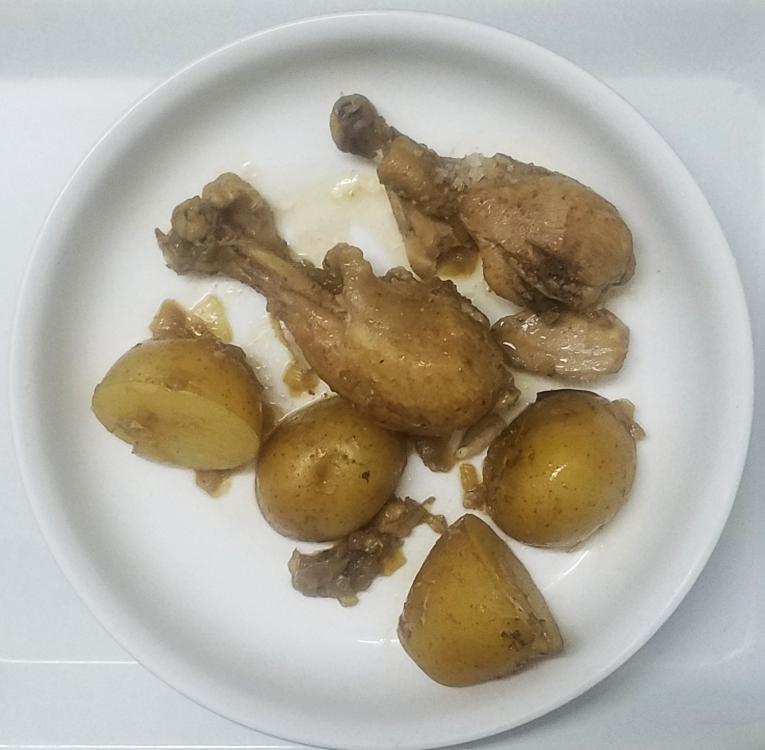

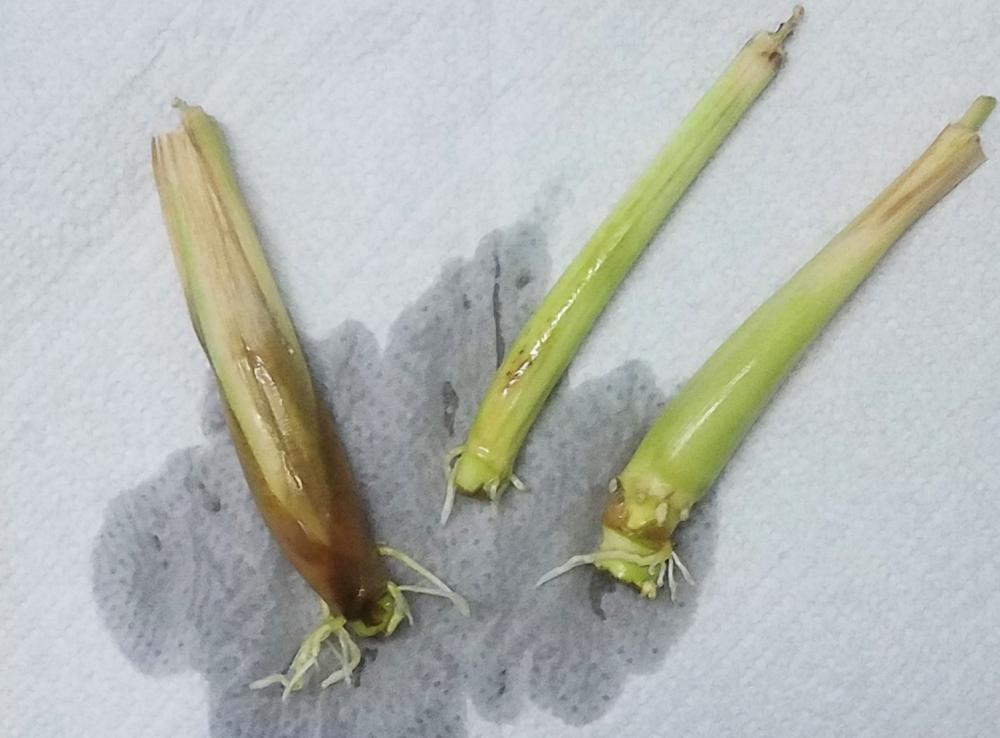

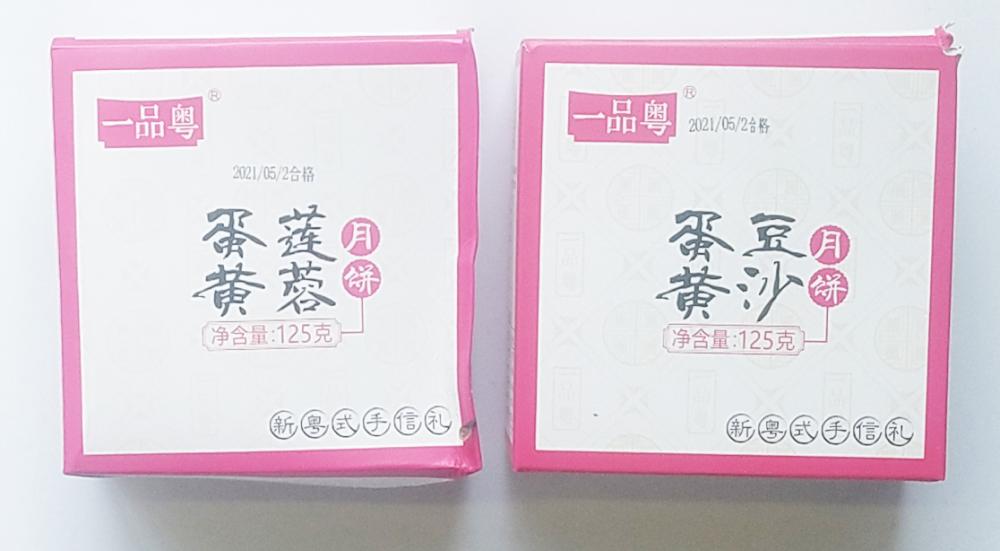

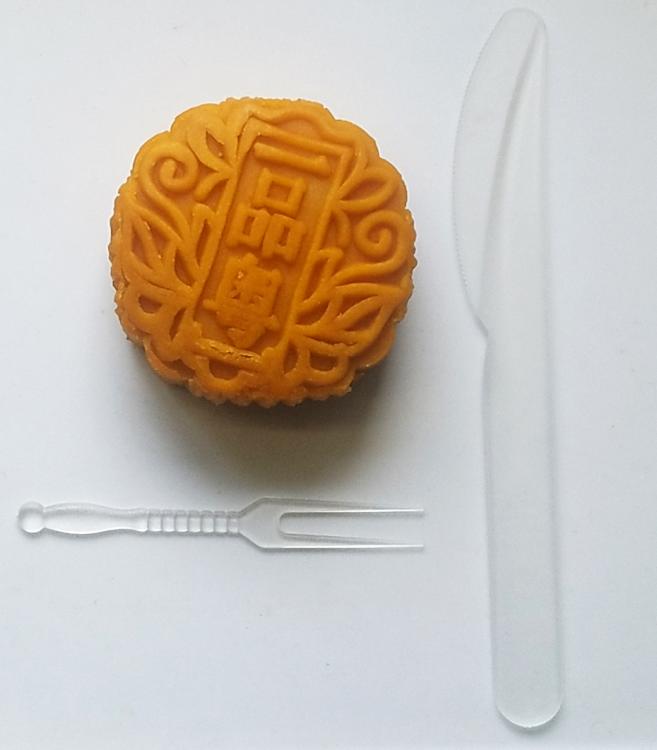
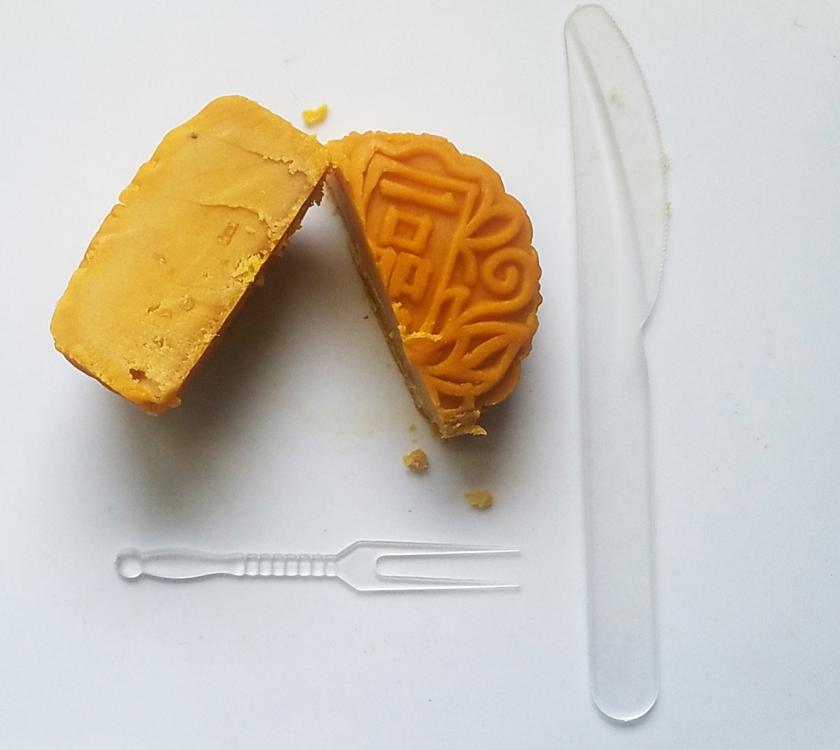



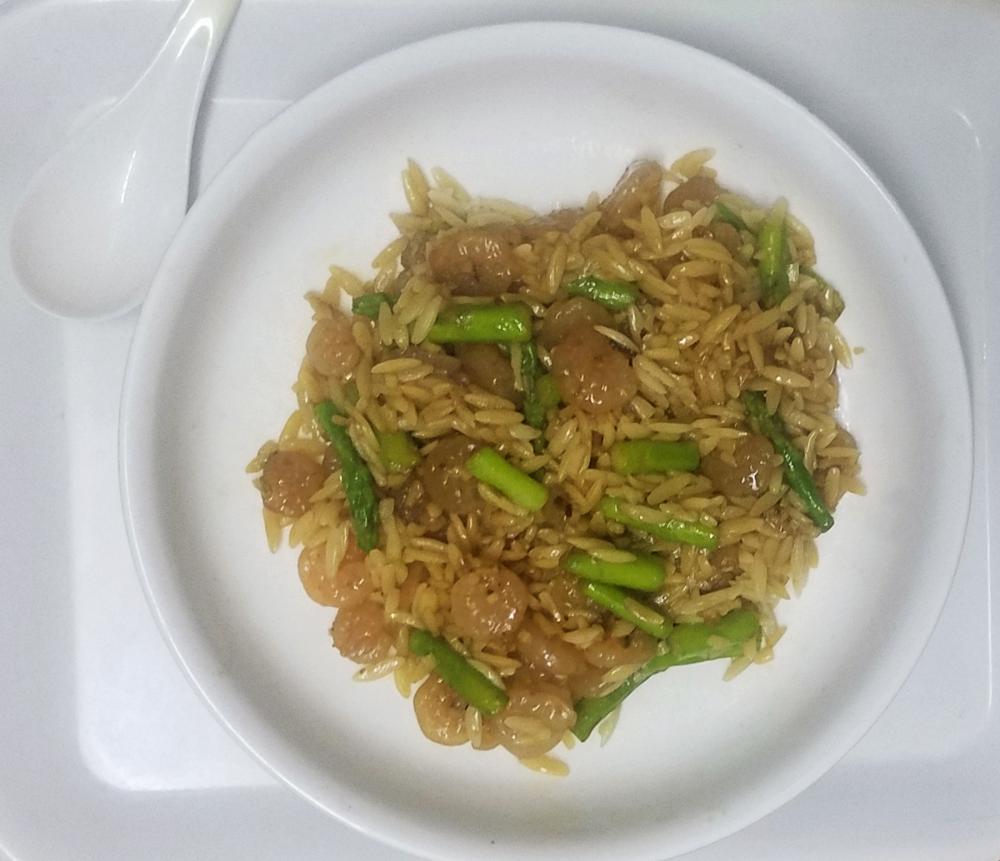
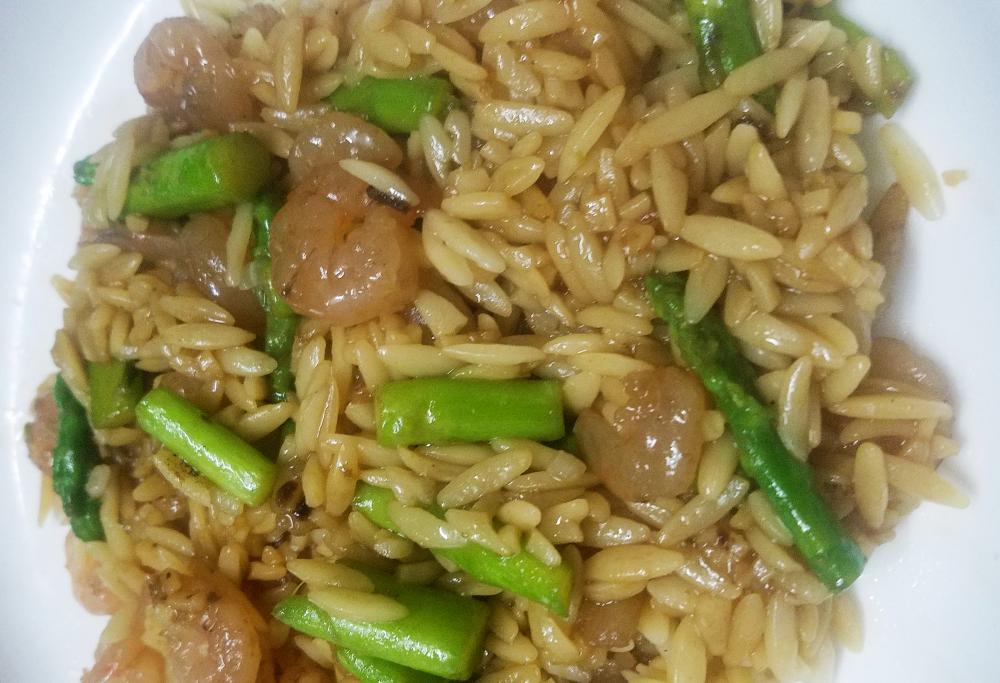

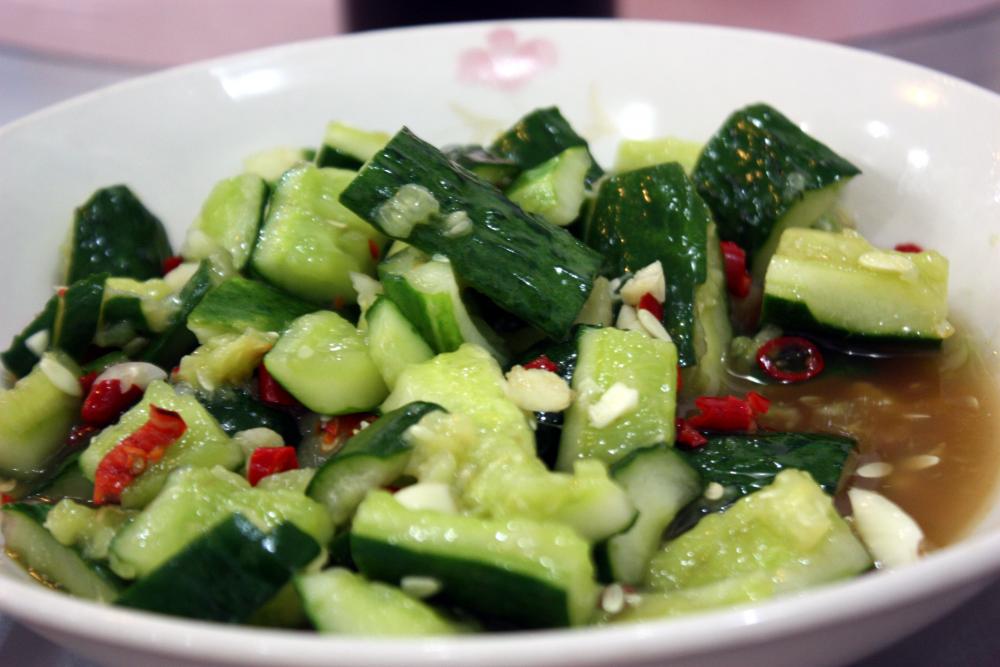

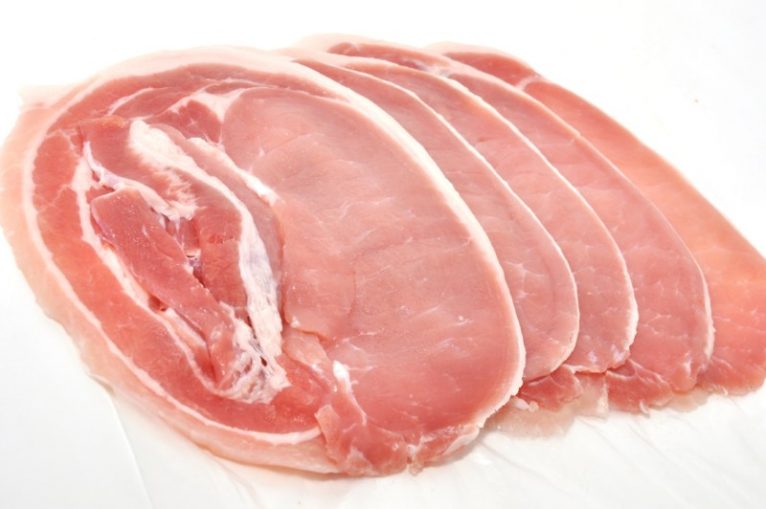
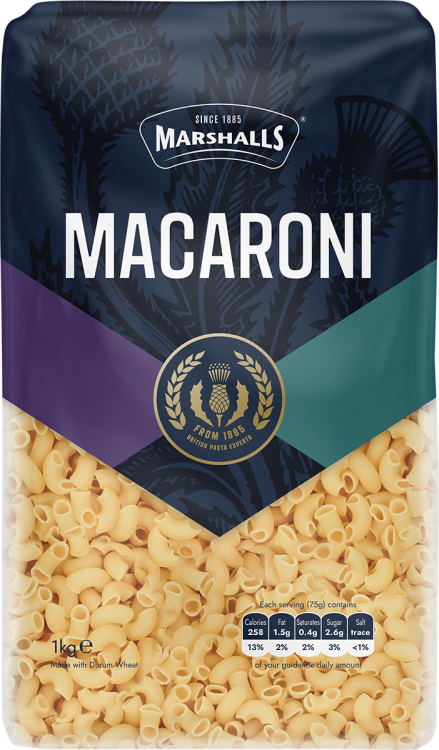
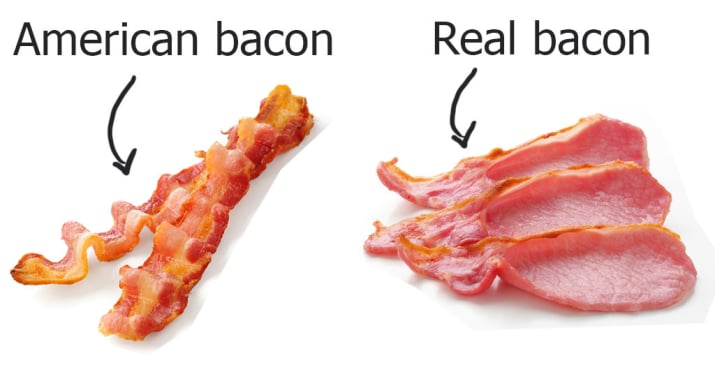
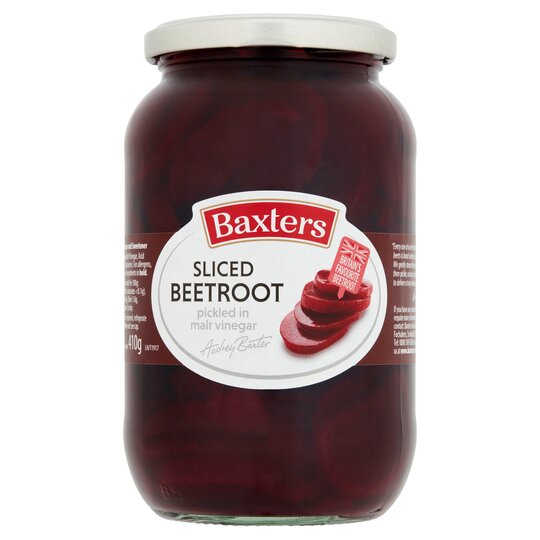
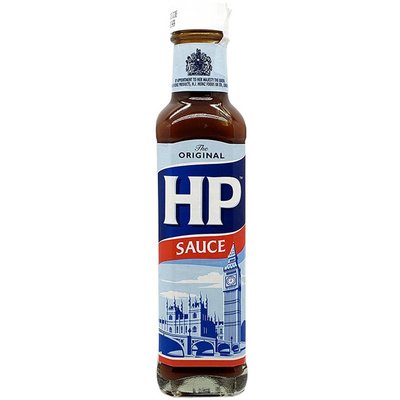
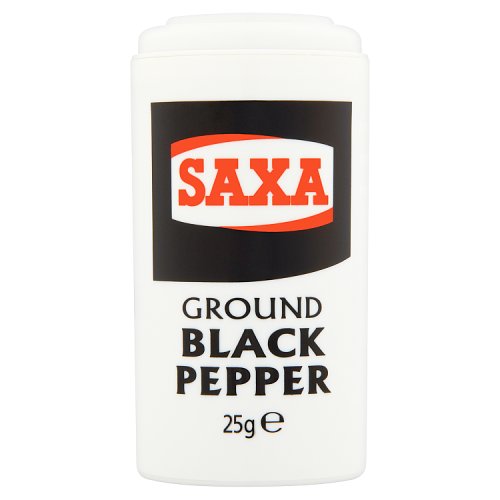
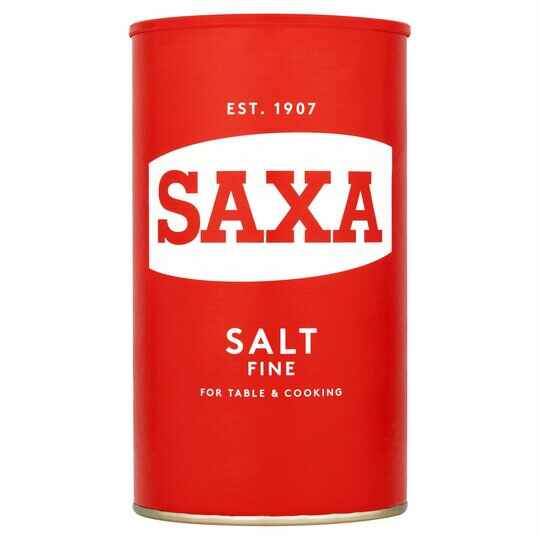
.thumb.jpg.a8c83ec2a55afd4f34c30211f535f5cc.jpg)
